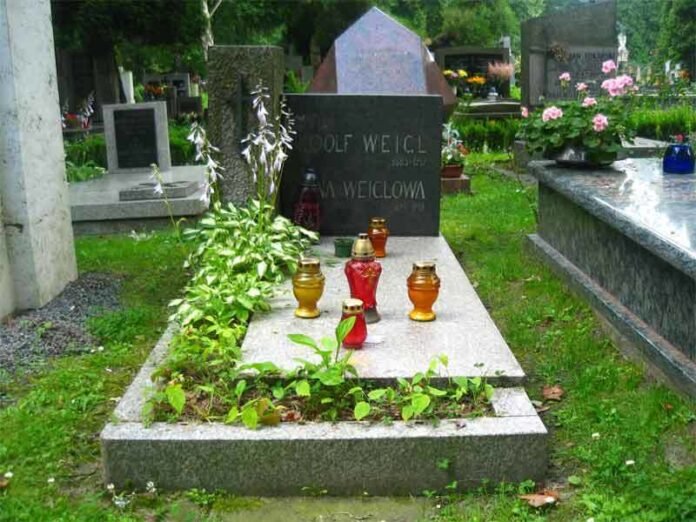A Polish biologist, physician, and inventor, Rudolf Weigl was a Nobel Prize winner. His discoveries helped make the first effective vaccine against epidemic typhus. His achievements earned him nominations for the Nobel Prize in Medicine each year from 1930 to 1934. His work also earned him the Pulitzer Prize.
typhus vaccine
The typhus vaccine was developed by Rudolf Weigl, an Austrian parasitologist during World War I. The weakened vaccine was subsequently sent to the German army. Weigl also managed to smuggle the stronger product to the Jews living in the Polish ghetto. The vaccine was the only effective means of battling typhus at the time.
Weigl’s work was based on the discovery that the typhus agent was transmitted by the louse. This agent was named Rickettsia prowazekii. Weigl found the louse intestine to be a host for the rickettsiae that cause typhus. He decided to use lice to study the bacteria in order to create a vaccine. Besides, he discovered that the bacteria cannot grow on artificial media and multiply only in living cells.
Besides the typhus vaccine, Weigl also discovered a special technique for feeding the lice. This technique involved attaching cages to the feeder’s body. The cages were placed in secret places, such as on the thighs and lower legs. The cages were sealed after 45 minutes to prevent the lice from bursting and fleeing. Weigl then used the cages to inject the typhus germs into the intestines of the lice to create a vaccine.
After World War II, Weigl’s work was widely known, but it was not published or distributed. Weigl’s work was primarily passed on through word of mouth. His vaccine was illegally delivered to the Warsaw ghetto, as well as to other Nazi-established Jewish ghettos. During this time, typhus epidemics were running rampant in many major cities.
The first effective vaccine against epidemic typhus was developed by Rudolf Weigl in the early 1920s. The vaccine was developed after Weigl had discovered that body lice are the primary vector of the disease. After he developed a method for growing and adapting these lice, he created a vaccine that was highly effective. The vaccine was first given to a patient in 1936 and it made the symptoms of the disease much milder and less deadly.
Nominations for Nobel Prize
Rudolf Weigl is a Polish scientist who received two Nobel Prize nominations. He was nominated for his invention of a typhus vaccine in 1942 and again in 1946 for his work on typhus. However, both nominations were denied because of German interference. Weigl had a reputation as a bad teacher, and his former assistants said that he had no interest in passing on his knowledge to others. Nonetheless, his vaccines helped save many lives.
Weigl, a Polish biologist and physician, began developing his typhus vaccine during the Second World War. When the Nazis occupied Poland, he was forced to open a factory to produce vaccines. In spite of his political and religious background, he hired many Jewish workers to work in his factory. This allowed him to protect them from being deported to Nazi death camps. As a result, he was able to manufacture and distribute thousands of vaccine doses across Europe. His achievements have led to two Nobel Prize nominations, but the Nobel Committee blocked his acceptance due to the war and politics.
Weigl’s greatest achievement was his development of a vaccine that prevented epidemic typhus, a disease that claimed many lives around the turn of the century. This vaccine had to be developed after a lengthy process involving extreme caution. In addition, Weigl was not a medical doctor and preferred to conduct lab-based studies before experimenting on humans.
Weigl’s humanitarian efforts have been recognized long after his death, including his recognition as a Righteous Among the Nations by Israel. He died in the mountain resort of Zakopane at the age of 73.
Impact on world health
In the 1930s, Rudolf Weigl studied parasitology in Poland. His studies of body lice were instrumental in developing a vaccine to fight the typhus plague. His vaccine was administered to the first person in 1936, and it was later used in countries around the world. After the vaccine’s introduction, Weigl was awarded the Commander’s Cross of the Order of Polonia Restituta by the Polish President Ignacy Moscicki. He also received two nominations for the Nobel Prize.
His discoveries saved the lives of millions of people during World War II. His work was even used by Belgian missionaries in China. The invention saved the lives of thousands of Chinese. Today, effective vaccines are a reality thanks to decades of research. Among the best-known modern vaccines is the mRNA COVID-19 vaccine, developed by Pfizer, Moderna, and Johnson & Johnson.
While working as a parasitologist in Przemysl, Weigl witnessed the outbreak of typhus throughout Eastern Europe. This disease was ravaging millions of people. This epidemic impacted the history of the world. For example, Napoleon’s army was defeated by typhus. Typhus outbreaks in Serbia affected war plans.
Rudolf Weigl was a well-deserved Nobel Prize winner. He also received numerous honors, including the Order of St. Gregory from Pope Pius XI, the Leopold Order from the Belgian King, and the Polonia Restituta. His contributions to the world of health have prompted him to be named Righteous Among the Nations by the Israel government.
In his quest to cure typhus, Weigl also developed an insect vaccine. The vaccine he created was called Rickettsia prowazekii, and it was first used in 1936. The vaccine’s success enabled Weigl to open a production plant in Poland at the outbreak of the Second World War. During the war, Weigl enlisted the help of fellow scientists at risk of persecution.
